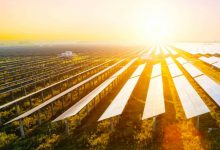Australian consumers face the risk of power outages this summer because of the threat of bushfires, heatwaves and increasingly unreliable coal generators, but the Australian Energy Market Operator says the surge in solar installations in the past 12 months will lessen the risks.
“The Bureau of Meteorology (BoM) is forecasting both warmer than average and extreme temperatures this summer, and an ongoing and significant risk of bushfires with drier than usual conditions,” AEMO chief executive Audrey Zibelman says in a statement accompanying its Summer 2019/20 Readiness Plan.
“These risks add to the deteriorating reliability of some of the older coal generation plants.”
But Zibelman says that since last summer, AEMO “is pleased to see” 3,700 megawatts (MW) of increased generation in the National Electricity Market, with rooftop and grid-scale solar generation representing approximately 90 per cent of this increase.
“The introduction of these resources delivers a welcomed improvement to reliability and reduces the need to procure further out of market reserves,” Zibelman said.
And the key message from AEMO is that rooftop solar is lowering overall grid demand and pushing it into the evening – lessening the risk of supply shortfalls. And large-scale solar is also providing added capacity at peak times.
“While underlying demand (the total energy used by consumers) is expected to be higher, the growing contribution of rooftop PV means this is not expected to translate to higher grid demand,” the report says.
“The trend of maximum demand shifting later in the day is also expected to continue, as consumers generate more of their own energy supply from rooftop PV during daylight hours, before drawing on grid supply into the evening.”
Those two key messages – increasingly unreliable coal generators, and increased reliability from solar – may be hard to swallow for some conservative politicians and commentators, many of whom secretly – and some, such as energy minister Angus Taylor’s wife, not so secretly – wish for outages to “teach lefties a lesson” and “prove” their theory that renewables don’t work.
But the changes are a growing reality. The coal fleet is ageing and becoming increasingly expensive to maintain and prone to failing in the heat, and although AEMO says it is working hard to do all it can to ensure there are no outages, it says it is impossible to guarantee 100 per cent supply no matter what the fuel source.
“Whilst unexpected events can and do happen, particularly when the power system is under significant pressure and most prone to failure, AEMO has worked diligently to prepare the power system appropriately, including the procurement of emergency resources,” Zibelman says.
These include purchasing emergency supply under its reserve trader mechanism. AEMO, however, says it has only sourced 125MW of “off-market” resources, a mixture of emergency generators and demand side management.
But it also has contracts for another 1,500MW of mostly “demand side” measures, where users will be paid to wind back their demand to help AEMO avoid the need for involuntary “load-shedding.”
Such load-shedding affected 200,000 customers for several hours last January in Victoria.
And while many consumers in the northern suburbs of Sydney have gone without power for days since storms hit that city late last week and knocked down trees and powerlines, the “load-shedding” from generation shortfalls is particularly sensitive and political dynamite for politicians seeking to drive a wedge into the energy transition.
AEMO’s biggest concern remains Victoria, where units at the Loy Yang A brown coal generator and the Mortlake gas plant are yet to return to service.
With them on line, as their owners have promised by the end of the month, Victoria should be able to meet its reliability standard. Without them, that task becomes difficult in the event of extended heatwaves, bush-fires and other “tail-risk” events.
Because of this, 125MW of “RERT” reserves have been contracted for Victoria, and of the remaining 1500MW signed up, around 1,000MW will be available for Victoria and South Australia, which also risks being affected by any issues in Victoria.
It puts the potential cost of using these facilities at $44 million, if the need is similar to last summer.
AEMO is continuing negotiations and may sign up more resources than the 1,500MW it has so far contracted across the NEM, particularly if there are issues with the Loy Yang A and Mortlake units, or any other problems are identified. The Yallourn brown coal generator is a particularly concern.
AEMO says it has worked to ensure sufficient fuel supplies are available for gas and coal generators, and it expects the drought to have minimal impact on hydro capacity, and has worked with network owners to ensure transmission lines are in good shape. It says dust could be an issue for both transmission and solar PV.
It has also worked to improve forecasting, including for large scale renewables, rooftop solar and so-called “virtual power plants”, and on demand forecasts, particularly for extreme days.
AEMO says it has also delivered extensive training for control room operators and operational support staff across a range of areas such as reserve management, system restart, enhancements to forecasting systems, and other situational awareness tools, and provided additional operational support seven days a week during critical periods.
“As a result of the BoM’s forecast severe weather conditions for this summer and a higher risk of bushfires, NEM real-time operations summer readiness training will have a significant focus on bushfire risk management,” it says.











